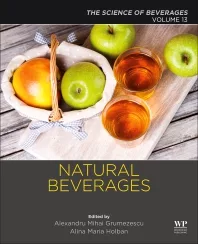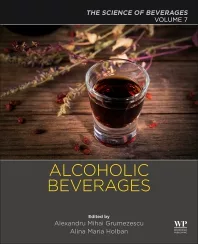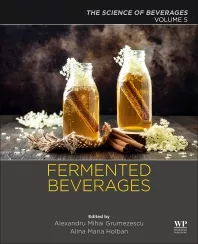R&D Feature
Consumers motivated to mitigate stress levels through foods, beverages
Adaptogens, cannabinoids among ingredients beverage-makers employing

The idiom of “the straw that broke the camel’s back” speaks to a proverb that highlights how a minor action can result in a large sudden reaction because of the successive additions of other minor actions. Analysts explain that consumers already had been experiencing stress and anxiety but the arrival of the pandemic has exacerbated this lifestyle state.
“Stress and anxiety have been growing steadily over the last decade in part due to the breakneck speed of life,” says Kishan Vasani, co-founder and chief executive officer of Spoonshot, St. Paul, Minn. “But this year has seen a 24 percent spike in stress and anxiety levels as a result of the pandemic. Social isolation, concerns over getting sick, losing loved ones, financial uncertainty, job loss and childcare have all contributed significantly to the increased anxiety faced by consumers today. In fact, many mental health professionals expect to see far long-term effects of the pandemic on people’s mental and emotional well-being.”
Jolene Jacobs, general manager for Caliper Ingredients, Commerce City, Colo., also denotes the unfortunate combination that has accelerated stress points.
“We’re living in exceptionally stressful times. Even without COVID-19, 2020 would have been a stressful year, with record-breaking wildfires and hurricanes, conflicts around racial justice and equity, and a polarizing election,” she explains. “Then came a pandemic that caused widespread illness and death (and the fear of both), job losses and business closures — while at the same time pandemic restrictions made off-limits some of the best ways people use to relieve stress and anxiety, like family gatherings, social interactions, fitness clubs, and communal experiences like movies, theater and spectator sports. And we’re still uncertain about when it will all start to get better.”
Because of these added stress agitators, experts note that consumers are taking a proactive approach to lessening their stress and anxiety.
“More consumers are more motivated than ever to find healthy ways to cope with stress, as they learn of how stress wreaks havoc on the mind and body,” says Michael Crabtree, director of scientific affairs at Bioenergy Life Science Inc. (BLS), Ham Lake, Minn. “Now for the first time, research shows that psychological stress affects the body's ability to regulate inflammation. The resulting imbalance of free radicals (oxidative stress) can promote the development and progression of disease.”
Doug Resh, director of commercial marketing for T. Hasegawa USA, Cerritos, Calif., explains that consumers might turn to foods and beverages to cope with stress; however, food and beverage choices also can support a healthy balance lifestyle during moments of increased stress.
“We know that consumers are actively looking for food and beverage products to help maintain a healthy lifestyle, this year more than ever,” he says. “But these products need to deliver on their nutritional promise — while also providing an enjoyable flavor and experience — to be fully adopted by consumers as an effective way to combat stress and anxiety.”
As a result, beverage manufacturers are requesting ingredients that support these product attributes.
“Many of our clients are focused on product development for beverages that specifically aim to reduce stress and anxiety,” Resh says. “Some of these products contain nootropics like L-Theanine, which is a natural amino acid stimulant that is proven to relieve anxiety symptoms and is commonly found in green tea and other tea products.
“Mellowing herbs are tried-and-true solutions to help combat anxiety and stress,” he continues. “Perennial favorites like chamomile, lemongrass, lavender and ginger are staples in the tea aisle and we continue to find practical applications for these herbs in a wide variety of packaged beverages, such as tea and sports nutrition products.”
BLS’ Crabtree also identifies solutions that help manage stress hormones. “Energy, free radical neutralization and managing key stress hormones all contribute to stabilizing the body under stress,” he says. “Today, they can all be attained in one package. RiaGev is a suitable solution because it is proven to increase [nicotinamide adenine dinucleotide, adenosine triphosphate (ATP) and glutathione] as well as lower cortisone levels dramatically. Bioenergy Ribose, the backbone of our ATP structure and the source of our cellular energy, also supports these applications.”
When it comes to better managing stress, Spoonshot’s Vasani explains that foods can fulfill one of the many roles that consumers seek while also highlighting ingredient solutions to serve that role.
“Ingredients called adaptogens — defined as non-toxic plants that can potentially help the body resist stressors of all kinds, whether physical, chemical or biological — are considered to be helpful as relaxation aids and can even regulate mood,” he says. “Incorporating such ingredients in food and beverage options can help consumers alleviate some of their feelings of anxiety. After a slight dip in 2019, interest in adaptogenic ingredients has seen a 21 percent growth once again, no doubt spurred on by the stress of the pandemic.”
New frontier
Although foods and beverages that help reduce stress hormones are not new, the growing acceptance by consumers and state legislators are giving rise to a new ingredient market: cannabinoids, including cannibidiol (CBD) and tetrahydrocannabinol (THC).
“Cannabinoids in general are a growing way consumers are exploring to reduce stress and anxiety,” says Kelly Nielsen, vice president of insights and analytics for BDSA, Boulder, Colo. “When we think about this, we do consider the delineation between marijuana products, including THC and CBD, as well as hemp CBD products.”
Nielsen adds that among consumers who indicated use of either hemp CBD or marijuana CBD, the Top 5 reasons are as follows: relieving pain, sleep better, manage anxiety, manage stress, and relax/be mello.
Citing a High Yield Insights survey, Caliper Ingredients’ Jacobs say that almost one in four U.S. CBD consumers indicated they began using the cannabinoid in the past six months. This is the equivalent to 9 million new users, she adds.
“[W]hile the most popular reason people use CBD is for pain relief, anxiety/stress and sleep troubles are the next most common reasons,” Jacobs says. “In a 2019 Consumer Reports survey, 62 percent of CBD users polled said CBD was ‘extremely’ or ‘very’ effective for reducing their stress and anxiety.”
Glen Boggini, co-owner of Charles Boggini Co., Coventry, Conn., also highlights the increasing acceptance and use of CBD.
“In fact, nearly one-third of the CBD market is made up of consumers that are new to using CBD,” he says. “Users are also consuming more CBD than ever before, with over half of CBD users reporting that they’re taking CBD five or more times a week.”
Boggini explains that foods and beverages can serve as a comfortable entry point for CBD usage. “Foods and beverages infused with CBD, such as gummies, edibles and seltzer, are a convenient way to incorporate CBD into a daily wellness routine,” he says. “They also tend to be a bit less expensive than tinctures, so are a great way to start getting into CBD.”
Caliper Ingredients’ Jacobs also notes the benefits of food and beverage infusions for CBD.
“When it comes to the cannabinoid ingredients category, formulating food and beverage products with CBD is a great way to appeal to those many ‘CBD-curious’ consumers who have heard about CBD and are interested in trying it, but don’t want to feel like they’re taking a medication,” she says. “We know there are many of them out there. One estimate suggests some 40 percent of American adults are interested in trying CBD ‘under the right conditions.’ Giving them options in foods and beverages that blend seamlessly into their lifestyles can help create those right conditions.”
“First and foremost are alcoholic beverages; historically, people have always used alcohol to ‘numb out,’ and for many, alcohol remains a go-to — even though its effects are short-lived and may come with other, risky implications such as dependence,” she says. “It will be interesting to see how CBD-based beverages start to come into play as a more healthful way to meet this need; for some, they’re an easy alcohol alternative, and we are seeing CBD beverages gain more and more shelf space in alcohol retailers.
“Two other groups of beverages used in this space are teas and, increasingly, value-added waters,” Jacobs continues. “Both of these categories have done a great job taking a traditional and well-accepted beverage and innovating with functional ingredients with proven benefits for the mind and body. Due to this innovation, we continue to see a rise in consumption of both categories, primarily driven by the addition of the value-added ingredients. For example, a just-released Beverage Marketing Corporation report projects 18.5 percent growth in the enhanced water segment through 2024.”
Although opportunities abound for CBD fortification, suppliers note that steps should be taken to protect this emerging market.
“It’s important for consumers to educate themselves about the benefits of CBD and proper dosage,” Charles Boggini Co.’s Boggini says. “They should also talk with a healthcare provider before incorporating CBD into their wellness routine. With many unsafe brands still in the market, it’s also critical that consumers carefully vet their CBD. Things to look for in a safe brand include batch lab testing/easily accessible lab reports; cGMP certification; hemp manufacturing licenses; and labeling that details ingredients and dosage information.”
Although misinformation remains a concern, Caliper Ingredients’ Jacobs notes that consumers have shown a thirst to learn more about CBD, presenting an optimistic outlook for the ingredient.
“Right now in the CBD space, misperceptions abound. For example, many consumers erroneously fear that CBD can get them high,” she says. “That’s despite the fact that the 2018 Farm Bill legally defines hemp and marijuana as different plants and CBD, derived from hemp, has none of the intoxicating effects associated with THC (the psychoactive ingredient in marijuana). One 2019 survey found that almost four in 10 consumers believed that CBD was just another name for marijuana.
“But at the same time, consumers are craving information, and there’s evidence that providing trustworthy information can be game-changing,” Jacobs continues. “When The CBD Insider polled lapsed CBD consumers in 2019 about why they stopped using CBD, ‘I don’t know enough about it’ was the most common reason (cited by 46 percent)—but 42 percent also said they’d reconsider using CBD if they ‘knew it worked.’”
Whether it be CBD or other food and beverage ingredient solutions, there likely will be an abundant demand for anti-stress/anxiety products, experts note.
“The World Health Organization estimates that around 300 million people around the world suffer from an anxiety disorder, a number that is expected to only go up in light of the COVID-19 pandemic,” Spoonshot’s Vasani says. “While beverages featuring adaptogens may not be the ideal solution for relieving chronic anxiety and stress, they definitely can help consumers dealing with milder forms or just occasional issues. We expect to see greater demand for such products as mental health and stress relief become major components of wellness goals for consumers in the long term.”
Looking for a reprint of this article?
From high-res PDFs to custom plaques, order your copy today!







